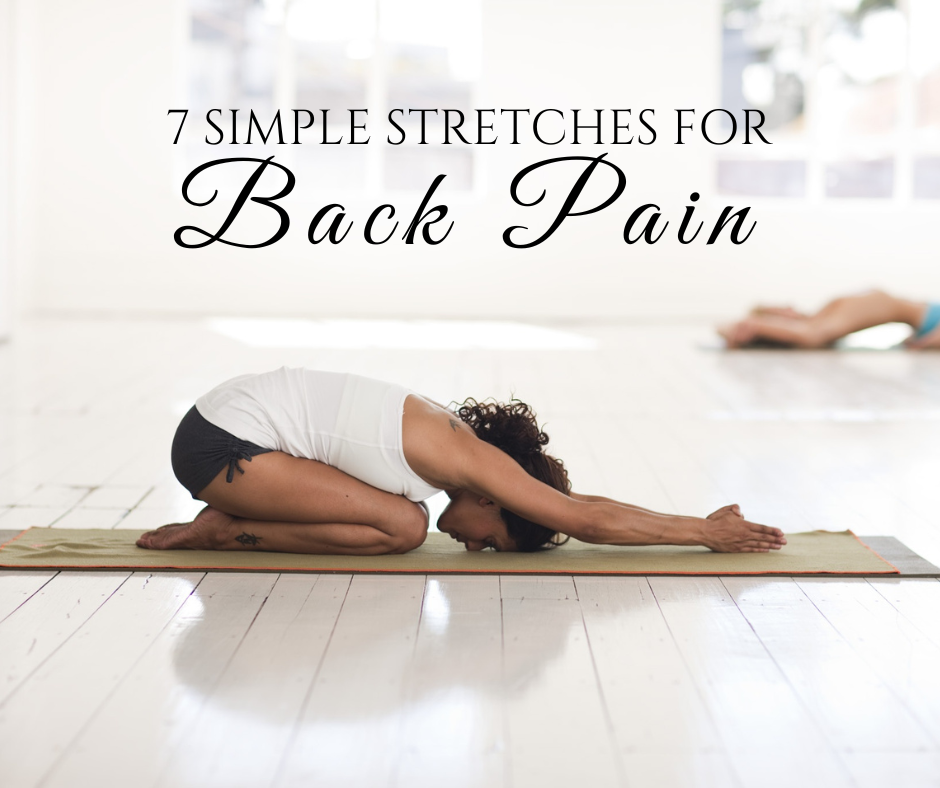Easy lower back stretches can be a simple yet effective way to relieve pain and improve flexibility. Whether you’re dealing with discomfort from sitting at a desk all day or recovering from a recent workout, stretching can help loosen tight muscles and reduce tension in the lower back. Regularly incorporating these stretches into your routine may prevent future pain and enhance overall mobility.
Stretching at home is a way to manage and prevent lower back pain, whether the discomfort is from a long day at your desk or a particularly taxing workout. Regular stretching can help relieve muscle tightness, improve flexibility, and support better posture, which will then help you avoid ongoing strain and pain. It’s a simple yet effective way to keep your back healthy and functional.
Lifestyle Causes of Lower Back Pain
Physical conditions such as muscle weakness, arthritis, and scoliosis cause lower back pain. However, not all causes of back pain are related to physical health. Smoking, sedentary lifestyles, obesity, and poor mental health put people at increased risk of developing back pain, according to Tony Matoska, PT, DPT, CMPT, a physical therapist and manager of the spine specialty program for Athletico Physical Therapy. “Low back pain, in general, can be complicated and has numerous contributing factors to its development.”
Benefits of stretching your Lower back
Stretching helps keep you flexible and strong and is one way to counteract the effects of less-than-ideal habits that impact your lower back. One of the best-known advantages of regular stretching is better flexibility. When you stretch consistently, your muscles become more pliable, so you can access a greater range of motion, which makes everyday activities easier and reduces the risk of injury by helping your body move more freely and efficiently.
One of the most immediate and noticeable benefits of stretching is how it can relieve pain by intentionally loosening the muscles and reducing stress—especially when paired with deep breathing. Stretching and deep breathing can target tight muscles, boost circulation, ease pressure on the spine and surrounding muscles, reduce pain, and encourage healing.
Another helpful benefit of stretching is its ability to reduce muscle tension. Spending a lot of time sitting, working out, or even dealing with stress can cause your muscles to become tight and uncomfortable. Stretching helps to release this tension so your muscles can relax and return to their natural state. Muscle tightness from stress or other physical causes can quickly lead to strain and pain in the lower back.
Lower Back Stretches To Try At Home
If you’re new to stretching or dealing with lower back pain, starting with simple, beginner-friendly stretches at home is a great way to feel empowered by taking action to help you feel better. These gentle stretches still provide relief and improve flexibility in your lower back. Here’s a step-by-step guide to some of the best beginner stretches you can try.
1. Child’s Pose
This traditional yoga pose gently stretches your gluteus maximus, latissimus dorsi (lats), and spinal extensors. It helps relieve pain and tension all along your spine, neck, and shoulders.
Its relaxing effect on your body also helps loosen up tight lower back muscles, promoting flexibility along the spine.
- Begin by kneeling on the floor or a yoga mat with your big toes touching and your knees spread apart.
- Sit back on your heels.
- Reach your arms forward slowly, lowering your chest toward the floor while extending your arms in front of you.
- Rest your forehead on the ground and breathe deeply. (If placing your forehead on the floor is uncomfortable, rest it on a yoga block.)
- Hold this position for 20 to 30 seconds, feeling a gentle stretch along your spine and lower back.
You can do this pose several times during your stretching routine. Feel free to do it between each of the other stretches you do.
2. Cat-Cow Pose
Matoska recommends Cat-Cow Pose, which is often part of restorative yoga. It helps relieve lower back and abdominal muscle tension. Focus on moving through your spine smoothly and slowly, matching the motion with your breathing.
- Get on your hands and knees with your wrists directly under your shoulders and your knees under your hips.
- Start with the “Cow” pose by arching your back, dropping your belly toward the floor, and lifting your head and tailbone toward the sky.
- Hold for a few seconds.
- Move into the “Cat” pose by rounding your back, tucking your chin to your chest, and pulling your belly button toward your spine.
- Alternate between these two positions for 10 to 15 repetitions, moving with your breath.
3. Bird Dog
The Bird Dog is a fantastic exercise that targets your back, core, and gluteal muscles. O’Sullivan suggests this move to improve stability and balance while strengthening the muscles that support your spine and relieving low back pain. Avoid arching your back or letting your hips tilt. Keep your movements slow and controlled, and focus on maintaining balance and a straight spine throughout the exercise.
- Begin on your hands and knees in a tabletop position. Your hands should be under your shoulders, and your knees should be directly under your hips.
- Keep your back flat and your neck in a neutral position, looking down at the floor.
- Tighten your abdominal muscles to stabilize your core.
- Extend your right arm slowly straight out in front of you at shoulder height while simultaneously extending your left leg straight out behind you at hip height. Both your arm and leg should be aligned with your torso.
- Hold this position for two to three seconds, maintaining balance and keeping your back flat.
- Slowly return your arm and leg to the starting position.
- Extend your left arm and right leg to repeat the movement on the opposite side.
- Continue alternating sides for 10 repetitions on each side.
4. Pelvic Tilt
Pelvic tilts build strength in your abdominal muscles, which helps relieve pain and tightness in your lower back. They also benefit your glutes and hamstrings. Focus on using your core muscles to move your pelvis rather than pushing with your legs.
To do a pelvic tilt, follow these steps:
- Lie on your back with both knees bent and feet flat on the floor.
- Engage your abdominal muscles as you flatten your back against the floor.
- Breathe normally, holding this position for up to 10 seconds.
- Release and take a few deep breaths to relax.
- Do 1 to 3 sets of 3 to 5 repetitions.
5. knee to Chest Stretch
The knee to chest stretch may seem too simple to work, but you’d be surprised how much pain relief it can offer for your lumbar spine. It works the quadratus lumborum muscles in the lower back, which help form the posterior abdominal wall.
- Lie flat on your back with your knees bent and feet flat on the floor.
- Bring one knee slowly toward your chest, holding the back of your thigh or shin.
- Pull your knee closer to your chest and keep your lower back pressed into the floor.
- Keep your other foot flat on the floor and your lower back relaxed throughout the stretch.
- Hold the stretch for 20 to 30 seconds, then switch legs.
- Repeat two to three times on each side.
6. Scorpion Stretch
The Scorpion stretch helps to release tension in the lower back, hips, and chest. This stretch should feel like a gentle twist, not a forced movement.
- Lie face down on your stomach, arms extended to the sides in a “T” position.
- Lift your left leg and bend your knee, then move it over and across your body toward your right side.
- Aim to touch your left foot to the floor near your right hand while keeping your chest and arms on the ground.
- Hold the stretch for about 15 seconds.
- Return to the starting position and repeat on the other side.
- Move slowly and only go as far as your flexibility allows.
7. Pretzel Stretch
Our experts love the pretzel stretch for the lower back, glutes, and hips. Keep your spine tall and twist gently to avoid straining your back.
- Sit on the floor with your legs extended straight in front of you.
- Cross your left leg over your right, placing your left foot flat on the floor beside your right thigh.
- Rotate your torso to the left, using your right arm to press against the outside of your left knee to deepen the stretch.
- Place your left hand behind you for support as you twist your body.
- Hold this position for 20 to 30 seconds.
- Switch sides and repeat.
If you are experiencing pain that is difficult to manage or that cannot be relieved by stretching and rest, contact your healthcare provider.

